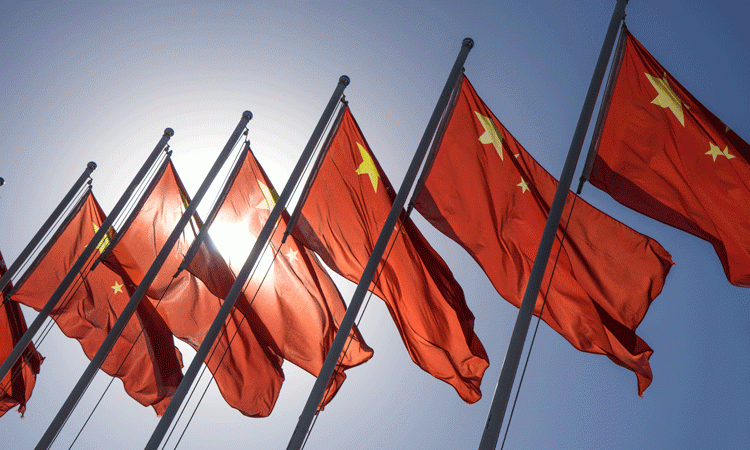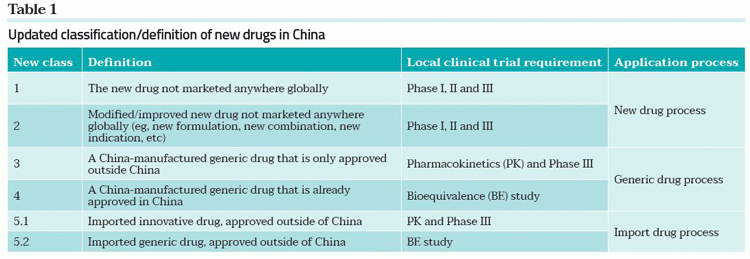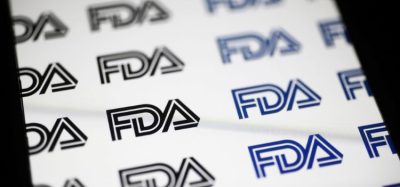China and the evolving regulatory landscape
Posted: 4 September 2019 | Megha Baruah (Freyr) | 1 comment
The Chinese pharmaceutical industry has been lagging behind in terms of drug development and bringing new products to the market. In this article, Megha Baruah discusses the changes the National Medical Products Administration (NMPA) of China is making to existing policies and informs on guidance documents that have been released to streamline the regulatory procedures for market access.


CHINA HAS become a business powerhouse for many pharmaceutical companies. To make the Chinese market more accessible to the international market in terms of regulatory procedures and product approvals, the National Medical Products Administration (NMPA) of China, formerly known as the Chinese Food and Drug Administration (CFDA), took a step forward and changed several guidelines and frameworks. The aim was to harmonise drug development and clinical trials execution, and by joining hands with the International Council for Harmonization (ICH), they framed the regulatory changes which came into effect in August 2015. But what made the NMPA change the regulations and what challenges were faced by organisations under previous regulatory scenarios?
Market-entry challenges and remediation
China has been considered a challenging market to enter due to the following issues:
- quality gaps between products locally and internationally manufactured
- longer timeframes for review and approval of new drugs
- a huge number of applications awaiting approval.
To address these challenges and promote structural adjustments, procedural transformations and policy upgrading plans, and to see the marketed products align with the international standards in terms of efficacy, safety and quality, the State Council of China shared its opinions on amending and reforming the review and approval systems for drugs and medical devices in 2015. Some of its key practical aims included the following:
- eliminating the existing backlog of registration applications
- establishing and enhancing the quality of generic drugs
- creating a regional framework that encourages R&D of new drugs in line with global standards
- increasing transparency in review and approval processes.
With the proposed changes and their impact on regulatory procedures, the modifications/ reforms in China have had a positive effect on drug development, which reduced approval timelines for Investigational New Drug (IND) and New Drug Applications (NDA) and also reduced delays in sanctioning drug approvals as compared to the US and EU.
Reforms that took place
With an aim to encourage more drug manufacturers to enter the market and expedite the drug approvals, China has restructured the regulatory system with the following reforms:
1) Increasing the number of drug reviewers


There has also been a comprehensive investigation of all the priority reviewed IND and NDA projects submitted in 2016 and 2017, and the approval timeline appears to be shorter than the previously approved applications. The reports show it took an average of 10 months for CDE to accept the dossier and approve the INDs and NDAs submitted in 2016 and it took just six months for review for the INDs and NDAs submitted in 2017.
China has become a business powerhouse for many pharmaceutical companies”
These regulatory modifications, such as increasing the number of drug reviewers, has helped the NMPA reduce the turnaround time when compared to US Food and Drug Administration (FDA) approvals. Prior to the modifications, time taken for approvals was 85 months and post-modifications it is just 28.3 months. The lag time for drug approvals in China when compared to the European Medicines Agency (EMA) has similarly changed, with an average lag time of 84.3 months prior to the modifications and 30.5 months post‑modifications.
2) Conditional approval policy
For drugs and medical devices specified for serious life-threatening conditions, significant unmet medical requirements or rare diseases where early or mid-stage clinical data can be used to anticipate clinical benefits, the NMPA planned to grant conditional approval to allow the manufacturers/ sponsors to market the products quickly in China. Thus, the NMPA introduced a Conditional Approval Policy (CAP). Companies/sponsors are required to share a risk management plan regarding the development of the product and provide documentation stating that the sponsors will complete the clinical trials after the NMPA’s review. For example, the Ebola vaccine was reviewed and introduced in a short timeframe by the NMPA to combat the disease after the sponsor provided sufficient proof (B/R [benefit/risk] ratio), along with a risk management plan and documents that clearly highlighted that clinical trials were to be completed in parallel to its use.
3) New drug registrations from outside of China
Due to the higher competition level in the industry of generics, we’ve seen a dip in the number of homegrown companies investing in innovative novel drugs”
The NMPA also created a new policy explicitly for new drug registrations from countries outside of China in 2016. This policy opened the first-in-human Phase I trials to new drugs developed outside of China and also simplified and reduced the clinical trial and drug registration process. Hence, international sponsors can submit an NDA in China without the condition of drug approval in the US or any other country.
4) Trial data acceptance from outside of China
Later in 2017, the NMPA introduced a new policy recommending the acceptance of clinical trial data from trials conducted outside of China, which further supports a significant improvement in the approval process. According to the proposed draft policy, a sponsor can use certain data generated in clinical trials conducted outside of China for the drug registration process in China after the NMPA’s audit. However, due to its novel nature, the potential benefit of approval timelines is still to be evaluated in the coming years.


“Restricted” and “promoted” categories of generics
The NMPA recently issued “restricted” and “promoted” categories for generic drugs, which signals a passage towards more rational control, course and supervision of the generic industry. Due to the higher competition level in the industry of generics, we’ve seen a dip in the number of homegrown companies investing in innovative novel drugs despite having their manufacturing facilities aligned with the regional good manufacturing practices (GMPs). However, bioequivalence (BE) trials that use conventional routes for their drug registration are now encountering risk due to the NMPA’s new requirements on maintaining generic drug quality and efficacy. For example, data considered inaccurate or incomplete will not be accepted and, potentially, existing licenses could be revoked. Regulatory bodies will raise concerns about a marketing authorisation holder (MAH) that does not hold a license for the manufacturing plant, to reduce the chances of inadequate drugs being introduced into the market. The announcement of these activities will create a more flexible, modernised arena in which research companies can be an MAH and can reach out to CMOs as long as required.


Reforms and their impact
Self-inspection of clinical data
Due to past instances of submission of forged or incomplete clinical data, the NMPA has launched a self-inspection programme for applicants, contract research organisations (CROs) and clinical sites to self-inspect 1,622 registration applications, which are pending at the approval stage. This initiative, which began in July 2015, has disclosed inauthentic and incomplete data accompanying disapproval or investigations for appropriate results/trial cases. The authority has also mobilised its experts to inspect selected studies that required validation in terms of data authenticity. Additionally, for future NDAs, the NMPA requires applicants to include a clinical trial self-inspection report to enable further reviews. The NMPA reported that after 12 months (as of July 2016), approximately 90 percent of the 1,622 applications have been withdrawn by the applicants or rejected.
Priority review


- innovative drugs not approved anywhere worldwide
- innovative drugs with a plan to transfer their manufacturing site to China
- global Clinical Trial Application (CTA) applied in China in parallel with the US or the EU
- innovative drugs for HIV/AIDS, viral hepatitis, rare disease(s), malignant tumours and paediatric indications
- newly-launched generic drugs.
In this process, the applicants are allocated reviewers and additional resources to communicate and obtain quick feedback from the health authority. Approvals in this process generally take six months. This scheme has effectively worked for applications submitted in February 2016.1
Additional CDE capacity
China’s regional regulatory expertise is essential in order to closely monitor the changes and to ensure accurate and timely market entry”
There was an urgent need to meet the CDE’s target to reduce the backlogs in drug review procedures to zero by 2018. In 2015, there were only about 70 reviewers to handle the annual load of more than 7,000 drug applications in the CDE. Following the new recruitment exercise, 600 drug reviewers were in place by the end of 2016 and the number was increased during 2017-2018.
Rationalisation of the MAH system and new classification/definition of new drugs
- The MAH system ensures that drug R&D institutions can obtain and hold the marketing authorisation while taking responsibility for drug quality. Now, any R&D institution can choose an existing established drug manufacturer that also allows regular site inspection to validate the process of manufacturing. This is a major incentive for local new drug innovators in China who can now hold marketing authorisation independently, which is going to be implemented in a phased manner starting with a trial in several selected provinces. With this change, the NMPA can now guide and encourage drug researchers/institutions to focus on R&D and alleviate the need to invest in their own manufacturing plants.2,3
- The NMPA has created a new classification – ‘new to the world’ – to replace the ‘new to China’ category. This is based on the global marketing authorisation approval status and the location of the manufacturing site(s), inside or outside of China. This removes the previous definitions that were based on the specific status in China and aligns the classification more closely to other regulatory agencies.
Generic drug quality and efficacy consistency
To improve quality and efficacy, the NMPA requested that generic drug manufacturers start drug consistency research on quality and efficacy by the end of 2018. A product list was developed by the NMPA to inform which generic drugs need this consistency evaluation. For evaluation purposes, the reference product should be the “innovator drug,” or a globally recognised one. An innovator drug is the first marketed drug globally with the full data package to support its safety and efficacy. This would be the situation where a generic company has previously performed the consistency evaluation, but the comparator was not the innovator drug. Hence, the generic company must re-evaluate against the innovator drug.
Comparison studies include the formulation, quality standard, crystal form, particulate size, impurities and dissolution rate, and in vivo BE studies. Many generic drug manufacturers required clarity on the requirements so, consequently, the NMPA began relevant training in August 2016.4,5
Simplified process


1) Multinational Clinical Trial (MNCT) submission to request global Phase II/III trials in China
2) after the drug has been approved and the Certificate of Pharmaceutical Product (CPP) is available from the US or EU (or any other countries), it has to be submitted to the NMPA to request a clinical trial waiver (requesting exemption from the need to conduct any additional local trial)
3) NDA submission to the NMPA for market approval.
This new change enabled the sponsor companies to apply for NDA/MAA submissions without the need for the second submission (to request NMPA for clinical trial waiver). This simplified the undertaking and shortened the whole approval process by at least one year.
In late 2017, the NMPA published a new regulatory change stating that they accept clinical trial data from trials conducted outside of China.6 However, as per the draft regulatory policy, a company can use certain data generated in international clinical trials for the drug registration process in China only after the NMPA’s audit.
Conclusion
In a nutshell, China is already on its way to modernising its compliance approach and improving the existing regulatory processes of drug registrations. The Chinese government has set forth new rules and regulations to streamline the entire process by reducing the delays in drug approvals right from the product development to marketing stages. These major modifications are expected to bring about a positive change in China’s healthcare system and have already made a positive impact with well-defined tracking and reporting systems.
The new guidelines and their related projections are very important for manufacturers to understand before starting the clinical development and manufacturing processes. These are proven to benefit the Chinese market as compared to the setbacks experienced in previous years. Companies with headquarters outside of China are now required to become acquainted with these changes and their implications. The better these regulations are understood by global companies, the more streamlined their registration and marketentry processes will be. Finally, China’s regional regulatory expertise is essential in order to closely monitor the changes and to ensure accurate and timely market entry.
About the author
Megha Baruah is a regulatory expert in the pharmaceutical domain. She looks after the sales of pharmaceutical regulatory services for US and LATAM markets with respect to registration, notification and classification of pharmaceutical products and guides manufacturers on various regulations of regional health authorities. She has been a key player in the successful publishing and submission of Drug Master File (DMF) and Active Substance Master File (ASMF) to the US FDA and MHRA, respectively.
References
- www.sfda.gov.cn/WS01/CL0844/145260.html
- www.sfda.gov.cn/WS01/CL0087/134140.html
- www.sfda.gov.cn/WS01/CL0056/155020.html
- www.sfda.gov.cn/WS01/CL0056/146200.html
- www.sfda.gov.cn/WS01/CL0778/148660.html
- Taylor P. “China may Relax Trial Requirements for new Drugs, Allowing Foreign Data.” 9 October 2017. https://www.fiercebiotech.com/biotech/










Megha
Well done, with the improved processes and stringent requirements for novel drug approvals in China. Are you aware of other counties that would except the CDE approval? Are there markets that would allow local briding studies to be conducted to facilate local marketing authorization? Thanks